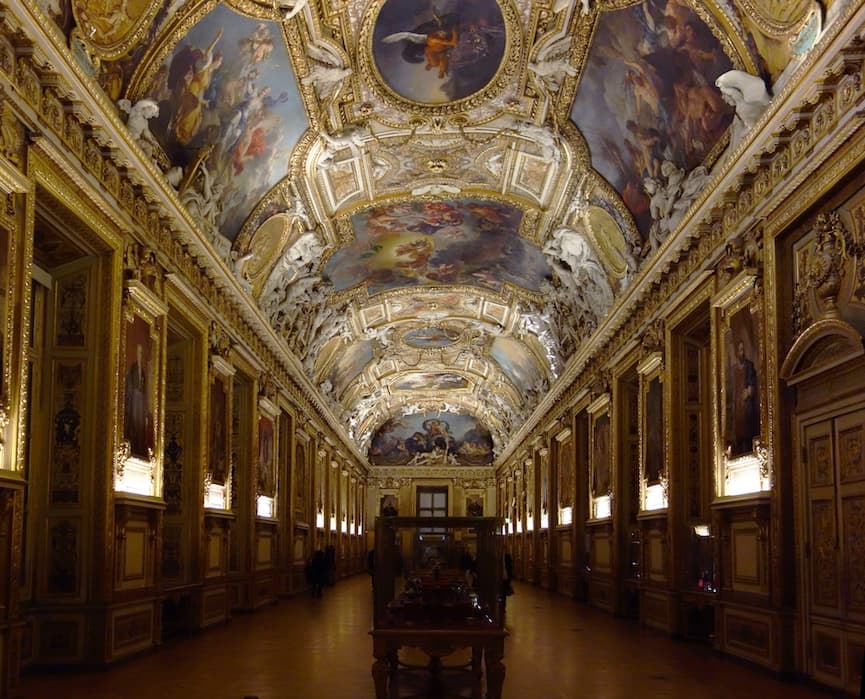In a stunning development that has shaken France’s cultural establishment, French authorities have detained two suspects following the audacious theft of historic jewels from the Louvre Museum in Paris. The robbery, which occurred on October 19, 2025, at the museum’s famed Galerie d’Apollon, involved the disappearance of several priceless artifacts belonging to the French Crown Jewels. The estimated value of the stolen pieces exceeds 88 million euros, or roughly 102 million dollars, making it one of the most significant art crimes in recent French history.
The Heist: A Four-Minute Operation
According to investigators cited by Reuters and Le Monde, the heist was executed in an astonishingly short time—approximately four minutes—during museum opening hours. The perpetrators reportedly used a removal vehicle equipped with a lift, posing as maintenance workers to reach a first-floor balcony. They then cut through a window, smashed glass display cases, and seized the jewels before escaping on motorbikes waiting nearby.
Among the stolen artifacts were pieces associated with France’s imperial and royal families, including jewels once belonging to Queen Marie Amélie, Queen Hortense, and Empress Eugénie. One of the most valuable items, a crown attributed to Empress Eugénie, was recovered near the museum after being dropped during the escape, though it was found damaged. Investigators believe the thieves acted with professional precision and had prior knowledge of the gallery’s layout and timing.
The Arrests: First Breakthrough in the Case
French media report that two men in their thirties from the Seine-Saint-Denis area were taken into custody on Saturday evening. One suspect was intercepted at Charles de Gaulle Airport while attempting to board a flight abroad, and the other was detained in a northern suburb of Paris. The Paris prosecutor’s office confirmed that arrests were made by the anti-gang brigade, although it declined to specify the total number of individuals currently under investigation. Officials have described the case as ongoing and emphasized that additional suspects may be identified in the coming days.
Interior Minister Laurent Nuñez called the perpetrators “seasoned professionals” and said investigators were examining possible international connections. Early evidence suggests the operation was carefully planned, raising concerns about the involvement of organized crime networks that specialize in high-value cultural thefts.
A Blow to France’s Cultural Heritage
The Louvre Museum’s Apollo Gallery houses part of the French Crown Jewels collection, including tiaras, necklaces, and earrings that once adorned European royalty. Their disappearance represents not only a financial loss but also a cultural and historical wound. Museum director Laurence des Cars described the theft as a “terrible failure” and confirmed that while the museum reopened days after the incident, sections of the Apollo Gallery remain closed for forensic analysis.
President Emmanuel Macron condemned the robbery as “an attack on a heritage we cherish because it is our history” and pledged full support to recover the stolen artifacts. The Ministry of Culture has since ordered an immediate review of security measures at national museums and accelerated an ongoing modernization plan. Union officials and security experts have pointed to chronic understaffing and outdated alarm systems as contributing factors to the breach.
Security and Institutional Accountability
The Louvre is the most visited museum in the world, welcoming more than eight million visitors annually. This level of exposure requires extraordinary vigilance, yet reports suggest that parts of the museum’s security infrastructure had not been fully upgraded despite previous warnings. The incident has sparked a broader debate over the adequacy of cultural-heritage protection in France, a country that holds one of the largest collections of art and antiquities globally.
Authorities have pledged to conduct a full review of surveillance systems, guard protocols, and emergency response times. Parliamentary hearings are expected to follow once the investigation concludes, and museum officials may face scrutiny for how such a major breach occurred in a public area of a globally renowned institution.
Heritage and Crime
The Louvre heist underscores the continuing vulnerability of cultural treasures to sophisticated criminal operations. Experts note that stolen artifacts of this nature are rarely sold on the open market; instead, they may be trafficked through private networks, dismantled for gemstones, or held for ransom. Beyond its immediate criminal dimension, the case highlights the intersection of heritage, prestige, and profit in the global black market for art.
For cultural institutions, the theft serves as a warning that symbolic visibility can make them targets rather than safe havens. It may also prompt museums worldwide to reassess their security strategies, balancing accessibility with protection. The incident raises uncomfortable questions about how far states are willing to invest in safeguarding their past when faced with modern security challenges.
Investigators are now focused on tracing the stolen jewels and mapping the network that may have facilitated the theft. French and international law-enforcement agencies, including Interpol, are expected to collaborate as the search expands beyond national borders. Officials hope that the two detained suspects will provide leads that could help recover the remaining pieces.
For the Louvre, the recovery effort will be both logistical and symbolic. Restoring public confidence in the institution’s ability to protect its treasures will take time and transparency. The theft has already triggered renewed calls for better funding of cultural security nationwide, ensuring that France’s artistic and historical legacy is not left vulnerable again.
Sources: Reuters, Le Monde, The Guardian, Associated Press
Note: All information in this article is based on verified public data and credible sources available at the time of writing.
